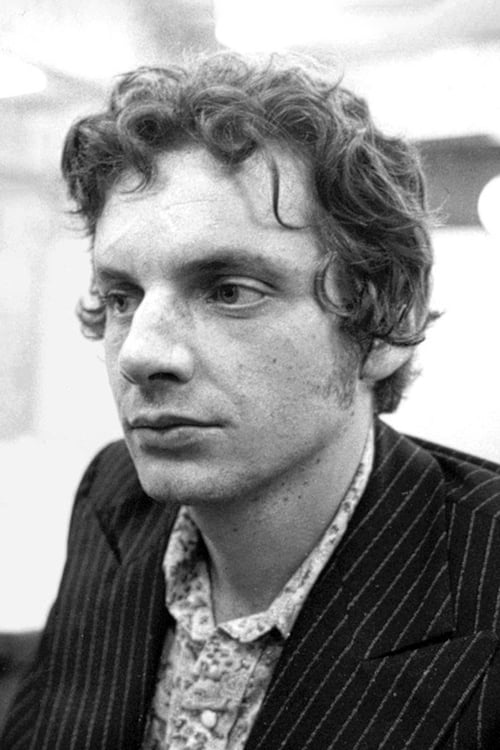
Rogério Sganzerla
Nacimiento : 1946-11-26, Joaçaba, Santa Catarina, Brazil
Muerte : 2004-01-09
Historia
Rogério Sganzerla (1946 — 2004) was a Brazilian filmmaker and one of the main names of the Cinema de Invenção (or Cinema Marginal) underground movement.
Influenced by Orson Welles, Jean-Luc Godard, and José Mojica Marins, Sganzerla often used clichés from film noir and pornochanchadas. Irony, narrative subversion and collage were trademarks of his film aesthetics.
Sganzerla was born in Joaçaba, in the state of Santa Catarina, but moved with his family to São Paulo at a very young age, living there for most of his life. During the 1960s he wrote for the newspaper "O Estado de S. Paulo" ("The State of S. Paulo") as film critic, quickly being recognised as a young talent.
In 1967, Sganzerla directed his first short film, "Documentário" ("Documentary"), winning an award at the JB-Mesbla 16mm Festival. "Documentário" was quickly followed up by his first feature-length film in 1968, "O Bandido da Luz Vermelha" ("The Red Light Bandit"), which became a landmark for the movement known as Cinema de Invenção or Cinema Marginal and is still Sganzerla's most well-known film.
In 1970, he founded the "Bel-Air Filmes" production company along with fellow Cinema de Invenção filmmaker Júlio Bressane. Headed by Sganzerla, the company produced his films "Copacabana Mon Amour", "Carnaval na Lama" and "Sem Essa, Aranha" and Bressane's "A Família do Barulho", "Barão Olavo, o Horrível" and "Cuidado, Madame", all shot in Brazil during four months of 1970 and edited abroad, in England, when both Sganzerla and Bressane were banished from their home country by the then rulling military dictatorship. While in exile, both Sganzerla and Bressane continued to shoot new films.
Sganzerla's personal obsessions, such as director Orson Welles (and his infamous visit to Brazil) and musicians Noel Rosa and Jimi Hendrix, appear in many of his films, going as far as being the main subject in some of them. In 1985, Sganzerla directed the docufiction "Nem Tudo É Verdade" ("It's Not All True") about Orson Welles' arrival in Brazil to film his unfinished documentary "It's All True".
Sganzerla died in 2004, of a brain tumor, shortly after finishing his last film "O Signo do Caos" ("The Sign of Chaos").
Description above from the Wikipedia article Rogério Sganzerla licensed under CC-BY-SA, full list of contributors on Wikipedia.
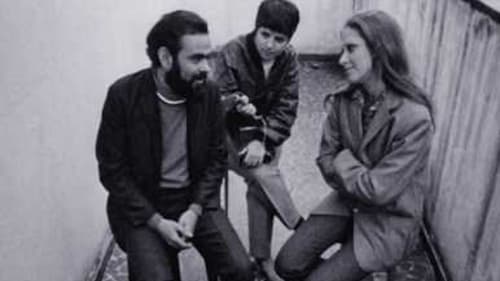
Self
An authentically marginal cinema created in Catholic university in Brazil. One of the most intriguing and imaginative moments in modern cinema in the voice of some of its select conspirators—with Carlos Reichenbach at the lead—, and through the most razing flow of images that can possibly be conceived.

Director of Photography
Extracts is a short film with images from 1970 to 1972 in the cities of Rio de Janeiro, Salvador, London, Marrakech, Rabat and the Sahara Desert region. The images were filmed by Helena Ignez and Rogério Sganzerla in exile, in the "leaden years" of the military dictatorship.

Extracts is a short film with images from 1970 to 1972 in the cities of Rio de Janeiro, Salvador, London, Marrakech, Rabat and the Sahara Desert region. The images were filmed by Helena Ignez and Rogério Sganzerla in exile, in the "leaden years" of the military dictatorship.

Self (archive footage)
Helena Ignez is one of the main female figures of Brazilian cinema. She developed a new style of acting. Nowadays, she directs independent films. The documentary tells some of the History of Brazilian cinema, its political context and Helena's trajectory.

Screenplay
A film in which dream and reality intertwine, A Moça do Calendário tells the story of inácio, 40, married, without a permanent job. Ex-street sweeper, he works as a mechanic at Barato da Pesada, where he dreams of the calendar girl.

Two years of research and visits to collections, cinematheques and museums; almost seventy interviews that generated 30 hours of recorded material; more than two hundred scanned photos and more than one hundred films watched. In total, more than a thousand hours of work were needed to prepare Brazilian Cinema in the 20th Century. The work is a fascinating journey through all the cinematic cycles that Brazil lived, from the pioneering Belle Époque, through the great studios like Atlântica and Cinédia, Cinema Novo, the urban comedies of the 70's, until the resumption in the late 90's. The documentary is unique, it gives the floor to who really wrote and lived this story intensely.

Rogério Sganzerla
A documentary on the restoration of Rogério Sganzerla's 1970 film "Copacabana, Mon Amour".

A documentary on prolific underground Brazilian filmmaker Rogério Sganzerla.

Between February an May of 1970, Julio Bresane and Rogerio Sganzerla made 7 films for their company Belair that were forbidden by the Brazilian censorship that reveal today images of an unique freedom.

Compilation of early Ivan Cardoso's films in Super 8, including "Nosferato no Brasil (Nosferato in Brazil)"

Camera Operator
A short documentary on Belair, an independent Brazilian film company that lasted for only five months in 1970.

Himself (archive footage) / (Voz em Off)
A short documentary on Belair, an independent Brazilian film company that lasted for only five months in 1970.

Editor
A customs agent, Dr. Amnésio, examines some reels of film, a documentary Orson Welles made about Brazil, and tries to confiscate the material. Then, a party in which repression agents celebrate their victory against freedom and creativity.

Writer
A customs agent, Dr. Amnésio, examines some reels of film, a documentary Orson Welles made about Brazil, and tries to confiscate the material. Then, a party in which repression agents celebrate their victory against freedom and creativity.

Producer
A customs agent, Dr. Amnésio, examines some reels of film, a documentary Orson Welles made about Brazil, and tries to confiscate the material. Then, a party in which repression agents celebrate their victory against freedom and creativity.

Director
A customs agent, Dr. Amnésio, examines some reels of film, a documentary Orson Welles made about Brazil, and tries to confiscate the material. Then, a party in which repression agents celebrate their victory against freedom and creativity.
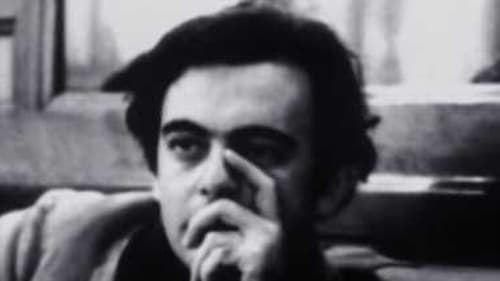
Documentary about Brazilian filmmaker Glauber Rocha, one of the most important names in the Cinema Novo, with interviews with some of his friends and colleagues.

Director

Editor
Helena Ignez's first film as a director is a homage to American architect and contemporary artist Vito Acconti, who made an urban intervention over a bridge in São Paulo, transforming that space for it to be used as shelter by nearby homeless people.

Camera Operator
Helena Ignez's first film as a director is a homage to American architect and contemporary artist Vito Acconti, who made an urban intervention over a bridge in São Paulo, transforming that space for it to be used as shelter by nearby homeless people.

Himself
Documentary about the trajectory of Antônio Polo Galante, known as "The King of Boca". The film maps work and forms of production in Boca do Lixo, popular area in Luz neighborhood located downtown São Paulo, where usually night clubs and sexual services establishments were located.

Editor
A short film made with unused footage from The Red Light Bandit and Carnaval na Lama.

Writer
A short film made with unused footage from The Red Light Bandit and Carnaval na Lama.

Director
A short film made with unused footage from The Red Light Bandit and Carnaval na Lama.

Original Music Composer
A film essay about Brazil discovered through Orson Welles' eyes during the shooting of It's All True.

Producer
A film essay about Brazil discovered through Orson Welles' eyes during the shooting of It's All True.

Writer
A film essay about Brazil discovered through Orson Welles' eyes during the shooting of It's All True.

Director
A film essay about Brazil discovered through Orson Welles' eyes during the shooting of It's All True.

Director
Loosely based on an Oswald de Andrade screenplay, "Perigo Negro" is a segment of anthology film "Oswaldianas" which deals with a uprising soccer player who has his career spoiled by a unscrupulous gambler

Director
Collective film with five segments around the works and life of brazilian writer Oswald de Andrade.

Director

Self
A documentary chronicling the life and works of Brazilian poet, songwriter, journalist and avant-garde filmmaker Torquato Neto, from his beginnings to his suicide at the age of 28.

Himself
In this short film, Ivan Cardoso records Brazilian film director Rogério Sganzerla sending a message to Brazil.

Director

Writer
The life of samba composer Noel Rosa.

Director
The life of samba composer Noel Rosa.

Director
Orson Welles acted in Brazilian culture and music by deeply researching Brazil's historical geology, consciously completing a legendary cultural mission. Although being turned down by Hollywood producers, he developed a triumphantly accomplished mission in the language domain - three friends of Welles' testified his love for cinema, his passion for Brazilian music and people and his obstinate endurance against formidable pressures coming from inside and outside Hollywood regarding his unfinished "It's All True".

Writer
Orson Welles goes to Brazil to shoot his documentary It's All True.

Director
Orson Welles goes to Brazil to shoot his documentary It's All True.

Editor
Register a popular celebration related to a battle fought in the city of Irani, starting point of Contestado War at Santa Catarina State, Brazil in 1912.

Writer
Register a popular celebration related to a battle fought in the city of Irani, starting point of Contestado War at Santa Catarina State, Brazil in 1912.

Director
Register a popular celebration related to a battle fought in the city of Irani, starting point of Contestado War at Santa Catarina State, Brazil in 1912.
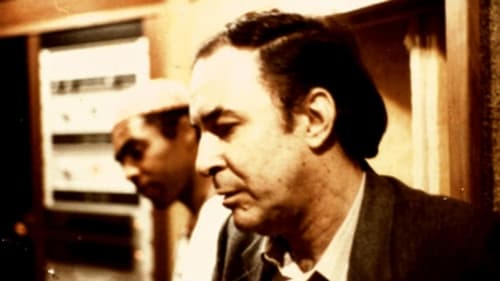
Editor
João Gilberto receives Caetano Veloso, Gilberto Gil and Maria Bethânia during the recording of his album Brasil.

Producer
João Gilberto receives Caetano Veloso, Gilberto Gil and Maria Bethânia during the recording of his album Brasil.

Director
João Gilberto receives Caetano Veloso, Gilberto Gil and Maria Bethânia during the recording of his album Brasil.

Producer
Homage to the great Brazilian samba songwriter Noel Rosa (1910-1937).

Editor
Homage to the great Brazilian samba songwriter Noel Rosa (1910-1937).

Homage to the great Brazilian samba songwriter Noel Rosa (1910-1937).

Writer
Homage to the great Brazilian samba songwriter Noel Rosa (1910-1937).

Director
Homage to the great Brazilian samba songwriter Noel Rosa (1910-1937).

Editor
Documentary about power and class relations in the sociocultural context of Bahia, considering the history of oil extraction in the state.

Writer
Documentary about power and class relations in the sociocultural context of Bahia, considering the history of oil extraction in the state.

Director
Documentary about power and class relations in the sociocultural context of Bahia, considering the history of oil extraction in the state.

Self
A film portrait of Jose Mojica Marins.

Himself
An unusual look at 1978 Brasilia Film Festival and the politics that make certain films fashionable or not.

Costume Design
Man tries to decipher a manuscript about an ancient civilization and gets involved in strange situations. In fact, the plot is just an excuse to tackle the subjects of mysticism and human condition.

Producer
Man tries to decipher a manuscript about an ancient civilization and gets involved in strange situations. In fact, the plot is just an excuse to tackle the subjects of mysticism and human condition.

Editor
Man tries to decipher a manuscript about an ancient civilization and gets involved in strange situations. In fact, the plot is just an excuse to tackle the subjects of mysticism and human condition.

Writer
Man tries to decipher a manuscript about an ancient civilization and gets involved in strange situations. In fact, the plot is just an excuse to tackle the subjects of mysticism and human condition.

Director
Man tries to decipher a manuscript about an ancient civilization and gets involved in strange situations. In fact, the plot is just an excuse to tackle the subjects of mysticism and human condition.

Writer
A documentary based on the book Umbanda no Brasil by the scholar Mata e Silva, who is interviewed by the director. The book studies the Brazilian religion known as spiritism, a syncretism of African beliefs and magical rites, Indian beliefs and images, and Catholic symbols.

Producer
A documentary based on the book Umbanda no Brasil by the scholar Mata e Silva, who is interviewed by the director. The book studies the Brazilian religion known as spiritism, a syncretism of African beliefs and magical rites, Indian beliefs and images, and Catholic symbols.

Director
A documentary based on the book Umbanda no Brasil by the scholar Mata e Silva, who is interviewed by the director. The book studies the Brazilian religion known as spiritism, a syncretism of African beliefs and magical rites, Indian beliefs and images, and Catholic symbols.

Director
Inspired by "Voyage to the land of Brazil" by Jean de Léry, this short follows the adventures of Nicolas Durand, from Villegagnon, and the estabilishment of a French colony in 16th-century Rio de Janeiro.

Cinematography
A millionaire lives in a sinister cottage where strange events unfold. A damned creature, he transforms himself in a werewolf and leads a following whose adepts spread horror and despair in the neighboring city, becoming themselves a clan of assassins. One day, the werewolf confronts Branca Justiça (White Justice), who summons benign forces to scathe them and frees him of his own wickedness.

Segment "Prólogo": interviews and scenes with some of the most important filmmakers of the "Boca do Lixo" of São Paulo. Segment "A Badaladíssima dos Trópicos x Os Picaretas do Sexo": shenanigans of a troubled fictional film production. Segment "Amor 69": Actress Maria Vargas is expected to appear nude in a scene, but ultimately refuses to do so.

Producer
A dysfunctional family, composed of a prostitute and two gays, one strong and the other fragile and stupid, lives a routine life in Rio de Janeiro. When the slut threatens the other two to stop supporting them, they decide to find an odalisque as an alternative to keep their easy life.

Editor
Spider, a banker, lives with three women. This tycoon is a caricature of Brazil's bourgeoisie, his trajectory is the starting point for an essay on the mental underdevelopment of Brazilian elites, in which black humor sets the tone for sharp criticism.

Writer
Spider, a banker, lives with three women. This tycoon is a caricature of Brazil's bourgeoisie, his trajectory is the starting point for an essay on the mental underdevelopment of Brazilian elites, in which black humor sets the tone for sharp criticism.

Director
Spider, a banker, lives with three women. This tycoon is a caricature of Brazil's bourgeoisie, his trajectory is the starting point for an essay on the mental underdevelopment of Brazilian elites, in which black humor sets the tone for sharp criticism.

Music
Sônia and her homosexual brother are both believed by their mother to be possessed by the devil. She works as a prostitute in the streets of Copacabana and he’s a servant who falls madly in love with his employer.

Producer
Sônia and her homosexual brother are both believed by their mother to be possessed by the devil. She works as a prostitute in the streets of Copacabana and he’s a servant who falls madly in love with his employer.

Screenplay
Sônia and her homosexual brother are both believed by their mother to be possessed by the devil. She works as a prostitute in the streets of Copacabana and he’s a servant who falls madly in love with his employer.

Director
Sônia and her homosexual brother are both believed by their mother to be possessed by the devil. She works as a prostitute in the streets of Copacabana and he’s a servant who falls madly in love with his employer.

Producer
Bressane’s first color film, shot in the home of the artist Elyseu Visconti. Part of it is missing sound and final editing because the director was forced to leave Brazil. Horror and humor to deal with the subject of insanity: “In the end everyone leaves the house as though they were laboratory mice escaping, they invade the city and contaminate the world”. “If we talk about horror, this film deals with national horror, with Mojica Marins as an emblem. There might be a few touches of Corman and English horror, but it is another level of horror. What transformed the film was the location where we were shooting, the house of a 19th century painter, a receptacle of light. When I arrived and saw that house, that light, I said: ‘This is the film. This is the horror’. The meaning of the film, its appeal, derives from this laboratory of light” (J. Bressane). — Torino Film Festival

Producer
Two maids decide to rebel against the society that oppresses them and start murdering their own mistresses. “???????????? ???????????????????? ???????? ???????????? ???????????????????????? ???????? ???????????? ????????????????????????, ???????????? ???????????????????????????????????? ???????????? ???????????????????????????? ???????????????? ???????????????? ???????? ???????????? ???????????? ???????????????????????? ???????? ???????????????? ???????????? ???????? ???????????????????????? ???????????????? ???????????????? ???????? ????????????????????????????????. ???????? ???????????????? ???????????????? ???????????????????? ????????????????????????????. ???????????????? ???????????????? ???????????????????????????????????? ????????????, ???????????? ???????????????? ???????????????????? ???????? ????????????????????????????, ???????????????? ???????? ???????? ???????????????? ???????????????????? ???? ????????????????, ???????????? ???????????????? ???????? ???????? ????????????????????????????????.”

Cinematography
Daily scenes of a grotesque family living in the metaphorical island of Babaloo.

Production Design
Ângela Carne e Osso (Angela Meat and Bone), a young nymphomaniac, lives surrounded by delinquents, and exerts intense allure on them, dominating them all with her erotic power.

Producer
Ângela Carne e Osso (Angela Meat and Bone), a young nymphomaniac, lives surrounded by delinquents, and exerts intense allure on them, dominating them all with her erotic power.

Costume Design
Ângela Carne e Osso (Angela Meat and Bone), a young nymphomaniac, lives surrounded by delinquents, and exerts intense allure on them, dominating them all with her erotic power.

Writer
Ângela Carne e Osso (Angela Meat and Bone), a young nymphomaniac, lives surrounded by delinquents, and exerts intense allure on them, dominating them all with her erotic power.

Director
Ângela Carne e Osso (Angela Meat and Bone), a young nymphomaniac, lives surrounded by delinquents, and exerts intense allure on them, dominating them all with her erotic power.

Writer

Director

Music
Documentary short that synthesizes the evolution of comic books since Yellow Kid until Spirit.

Director
Documentary short that synthesizes the evolution of comic books since Yellow Kid until Spirit.
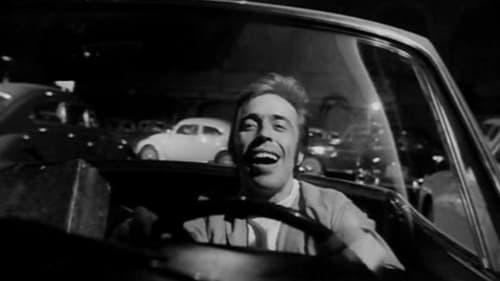
Original Music Composer
La historia de un famoso criminal brasileño, llamado The Red Light Bandit porque siempre usaba una linterna roja para irrumpir en las casas durante la noche. Trabajando solo, también solía violar a sus víctimas femeninas.

(uncredited)
La historia de un famoso criminal brasileño, llamado The Red Light Bandit porque siempre usaba una linterna roja para irrumpir en las casas durante la noche. Trabajando solo, también solía violar a sus víctimas femeninas.

Producer
La historia de un famoso criminal brasileño, llamado The Red Light Bandit porque siempre usaba una linterna roja para irrumpir en las casas durante la noche. Trabajando solo, también solía violar a sus víctimas femeninas.

Writer
La historia de un famoso criminal brasileño, llamado The Red Light Bandit porque siempre usaba una linterna roja para irrumpir en las casas durante la noche. Trabajando solo, también solía violar a sus víctimas femeninas.

Director
La historia de un famoso criminal brasileño, llamado The Red Light Bandit porque siempre usaba una linterna roja para irrumpir en las casas durante la noche. Trabajando solo, también solía violar a sus víctimas femeninas.

Additional Writing
Edson is having an affair with a left-wing aspiring movie director during Brazil's military dictatorship years. He tries to get some easy money for her film, but ends up being arrested and tortured as his torturers suspect he's involved in a plot to overthrow the militar government.
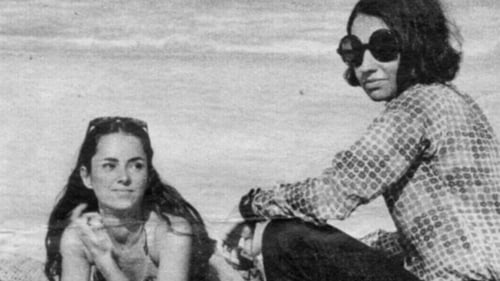
Editor
On screen, a bride gets ready for her wedding day. Off screen, middle-class young women from Rio de Janeiro share their experiences and impressions concerning virginity, marriage, sex and politics.

Editor
A group of middle-class friends driving around São Paulo choose one of the women as a bait to attract a victim, object of their alienation and moral aggressiveness.

Producer
Two young men decide to go to the cinema. However, since their tastes are very strict, they end up in a quarrel.

Sound
Two young men decide to go to the cinema. However, since their tastes are very strict, they end up in a quarrel.

Writer
Two young men decide to go to the cinema. However, since their tastes are very strict, they end up in a quarrel.

Editor
Two young men decide to go to the cinema. However, since their tastes are very strict, they end up in a quarrel.

Director
Two young men decide to go to the cinema. However, since their tastes are very strict, they end up in a quarrel.



















